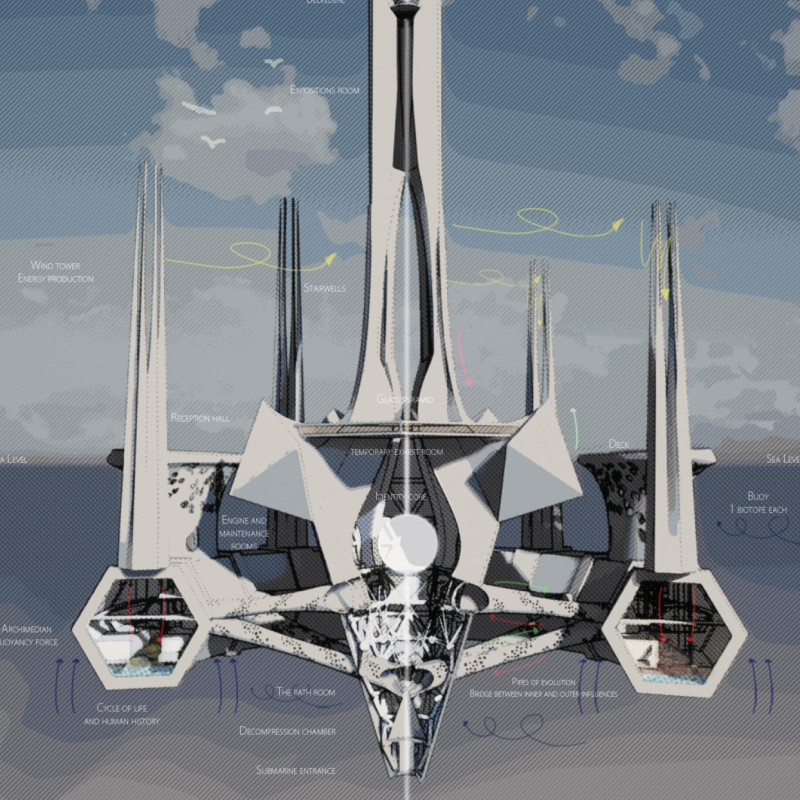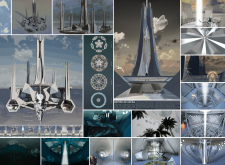5 key facts about this project
The project serves various functions, including research laboratories, observatories, and community engagement spaces. This multifunctionality allows it to serve as both a cultural and educational hub, fostering interaction among visitors. The internal layout consists of interconnected pathways that promote movement and engagement, enhancing the user experience while maintaining a connection with the outer environment.
Unique Design Approaches and Materiality
A defining characteristic of "Abyssus ad Astra" is its innovative use of materials. Large glass surfaces optimize natural light and provide panoramic views of the surrounding landscape, creating a seamless integration between indoor and outdoor spaces. The use of steel in structural frameworks enhances the overall efficiency of the design, allowing for expansive forms without compromising stability. Concrete serves as a grounding element, particularly in foundational areas and lower levels, emphasizing the structure's connection to the earth.
The architectural design incorporates environmental strategies such as renewable energy systems and native landscaping, which reduce the ecological footprint and foster sustainability. The choice of composite materials in specific areas further reflects a commitment to technological advancement, optimizing both functionality and energy efficiency. The unique interplay of geometric shapes—hexagons, circles, and triangles—adds a dynamic quality to the design, making it visually distinct compared to other architectural projects.
Spatial Dynamics and Community Interaction
Inside, the project is organized into distinct yet interconnected spaces that facilitate a range of activities. The observatory features innovative technology that allows for astronomical studies while engaging the public. Research areas are designed to encourage collaborative work among scientists and students, reflecting contemporary needs for interaction in educational settings.
Landscaping complements the architectural form, incorporating native flora that enhances biodiversity and supports local ecosystems. Pathways and outdoor areas provide spaces for reflection and gathering, creating a community-centric environment that invites exploration. The design encourages visitors to engage with both the architecture and the surrounding natural context, reinforcing a sense of place.
To explore the intricate details of "Abyssus ad Astra," including architectural plans, sections, and design elements, consider reviewing the comprehensive project presentation. This will offer deeper insights into the architectural ideas that underpin this multifaceted design.























